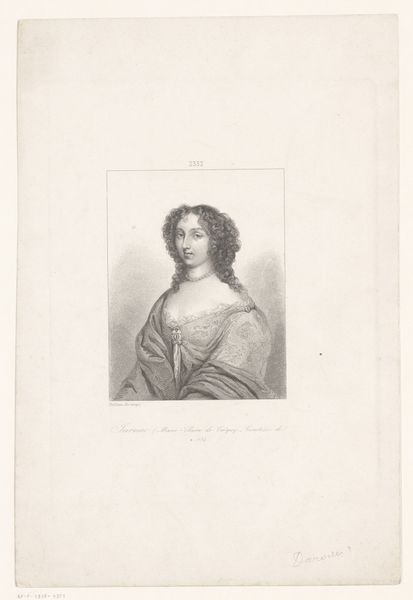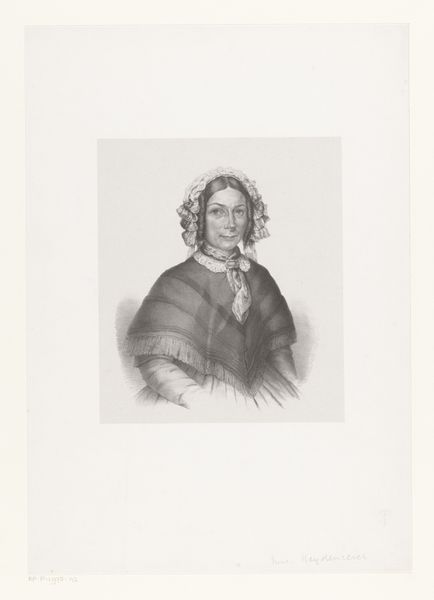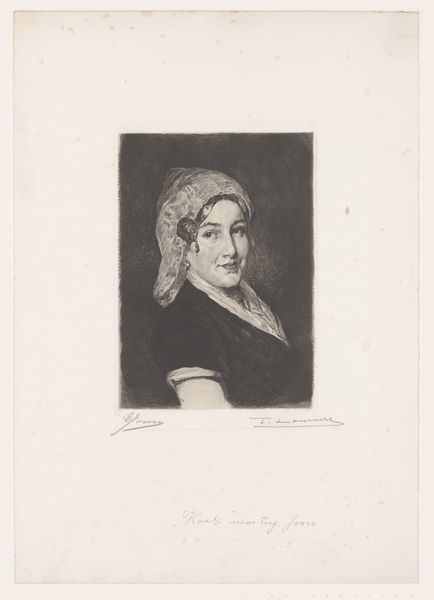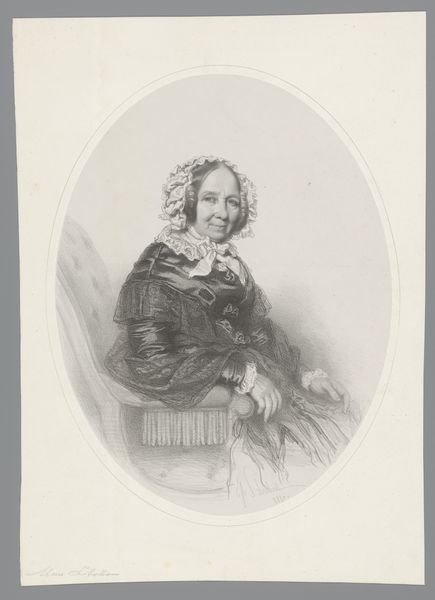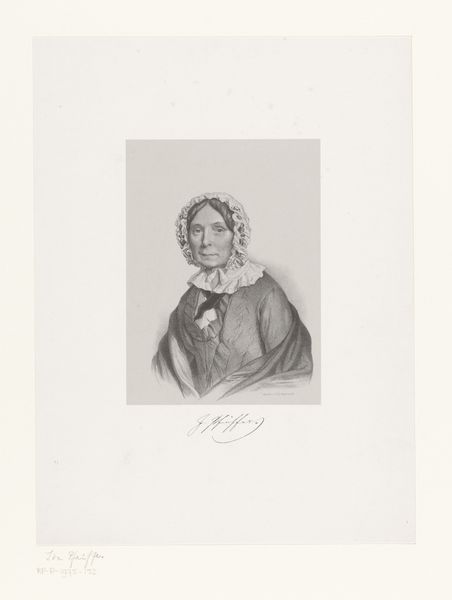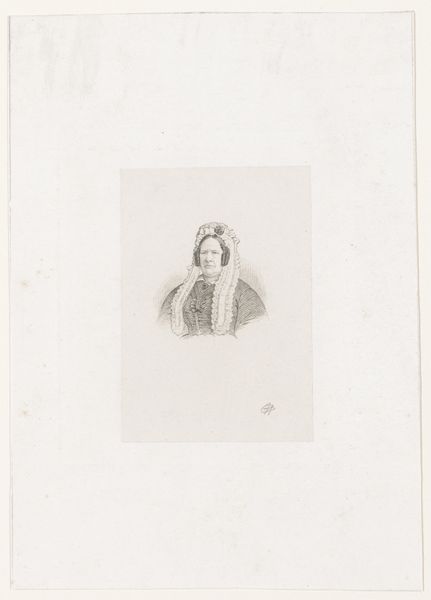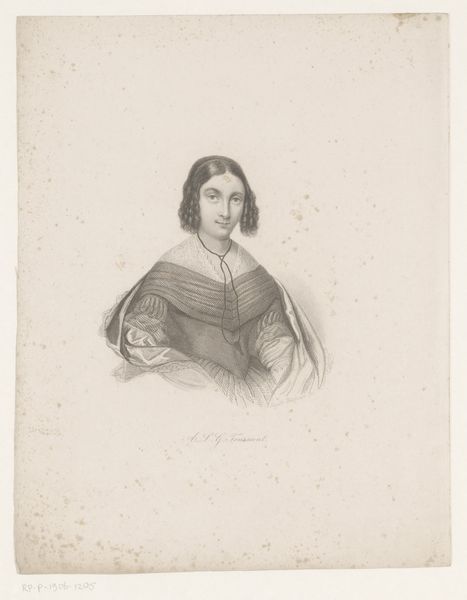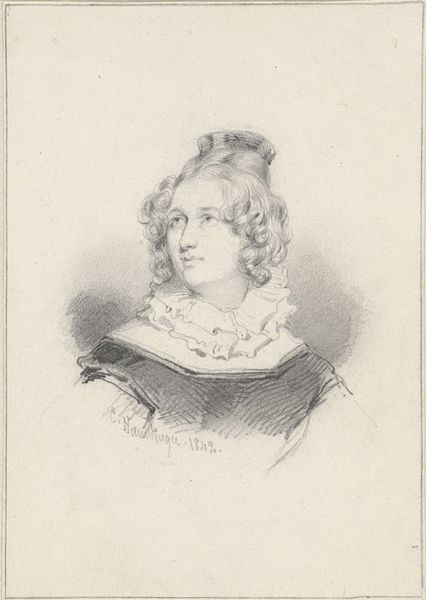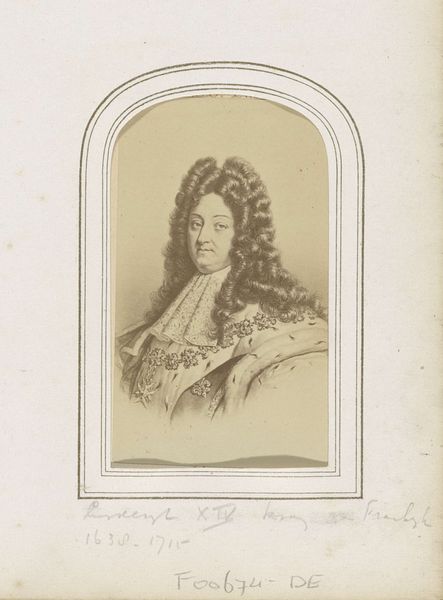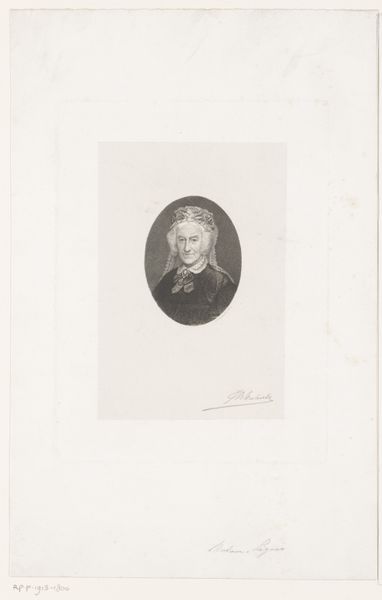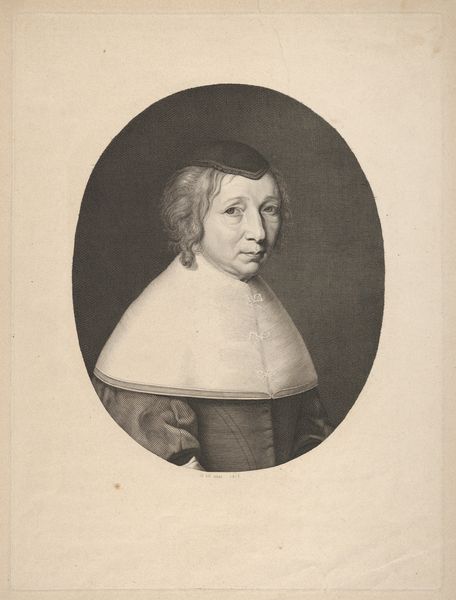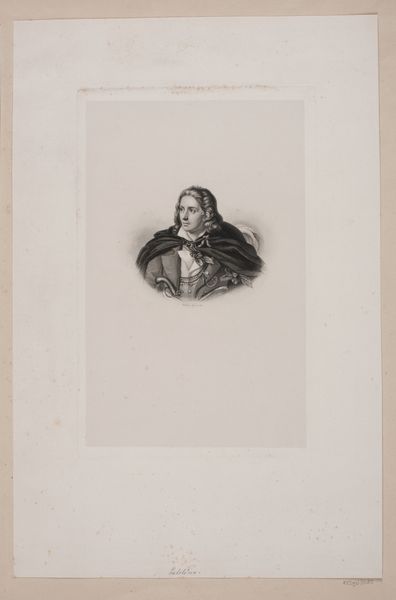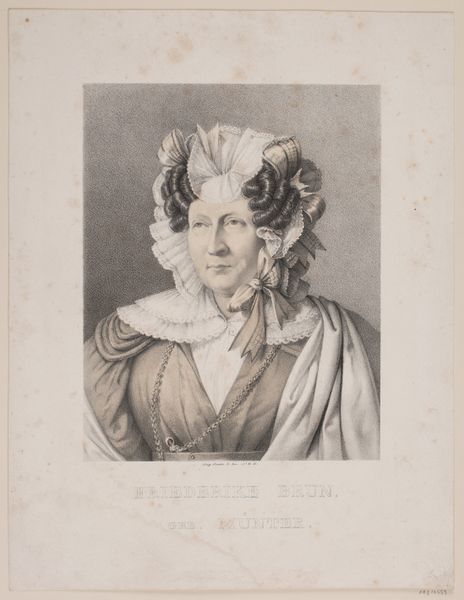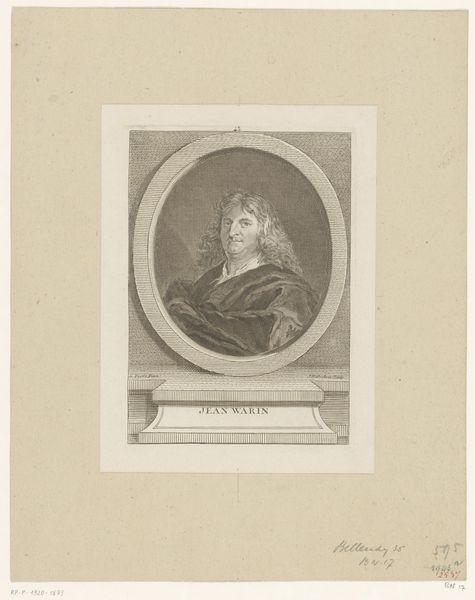
drawing, pencil
#
portrait
#
pencil drawn
#
drawing
#
pencil sketch
#
pencil drawing
#
pencil
#
genre-painting
#
realism
Dimensions: height 470 mm, width 355 mm
Copyright: Rijks Museum: Open Domain
Curator: Up next, we have a portrait of Mevrouw Melvill van Carnbee, a pencil drawing crafted sometime between 1851 and 1883 by Johan Hendrik Hoffmeister. It's got a quiet sort of presence. What strikes you first about it? Editor: It's interesting you say "quiet" because my immediate thought goes to the politics inherent in portraying wealthy, often white, subjects throughout art history, especially women whose images were typically vehicles for showcasing status rather than exploring inner lives. It makes me wonder about Mevrouw van Carnbee's own agency in this portrait. Curator: Agency, yes, a vital layer. I get this feeling she actually possessed some agency given Hoffmeister's attention to her expression—there’s a certain directness, wouldn’t you agree? The lace bonnet feels… almost subversive. Editor: I think the bonnet, rather than subversive, highlights societal expectations. The detail is meticulous, drawing attention to wealth and social standing, constructing the subject as respectable, in line with bourgeois expectations of the period. I see it reinforcing rather than resisting those boundaries. Curator: That's a potent reading! Yet, for me, that precisely-rendered lace has an audacious feel. Consider the medium—just pencil. Hoffmeister, seemingly bound by conventions, manages to reveal subtle human qualities. Editor: I agree, there is some nuanced expression that emerges through that rendering; the softness around the eyes and the slight pursing of her lips offer glimmers of individuality and maybe, if we're lucky, defiance peeking through the established codes. It reminds me of how subjects coded in portraiture were limited at the time to displays of societal and class identity. Curator: Definitely, you can't dismiss those boundaries, absolutely. The interesting push and pull adds dimension. Ultimately, doesn't art breathe best when sparking dialogues, questioning assumptions about these encoded notions? Editor: Yes, questioning not just aesthetic value but social, cultural, and historical value—that is how we find and assign meaning, especially when faced with objects and subjects historically defined. Curator: Spot on! And revisiting portraits such as this reminds us how far we’ve come while seeing how far we still must go.
Comments
No comments
Be the first to comment and join the conversation on the ultimate creative platform.
